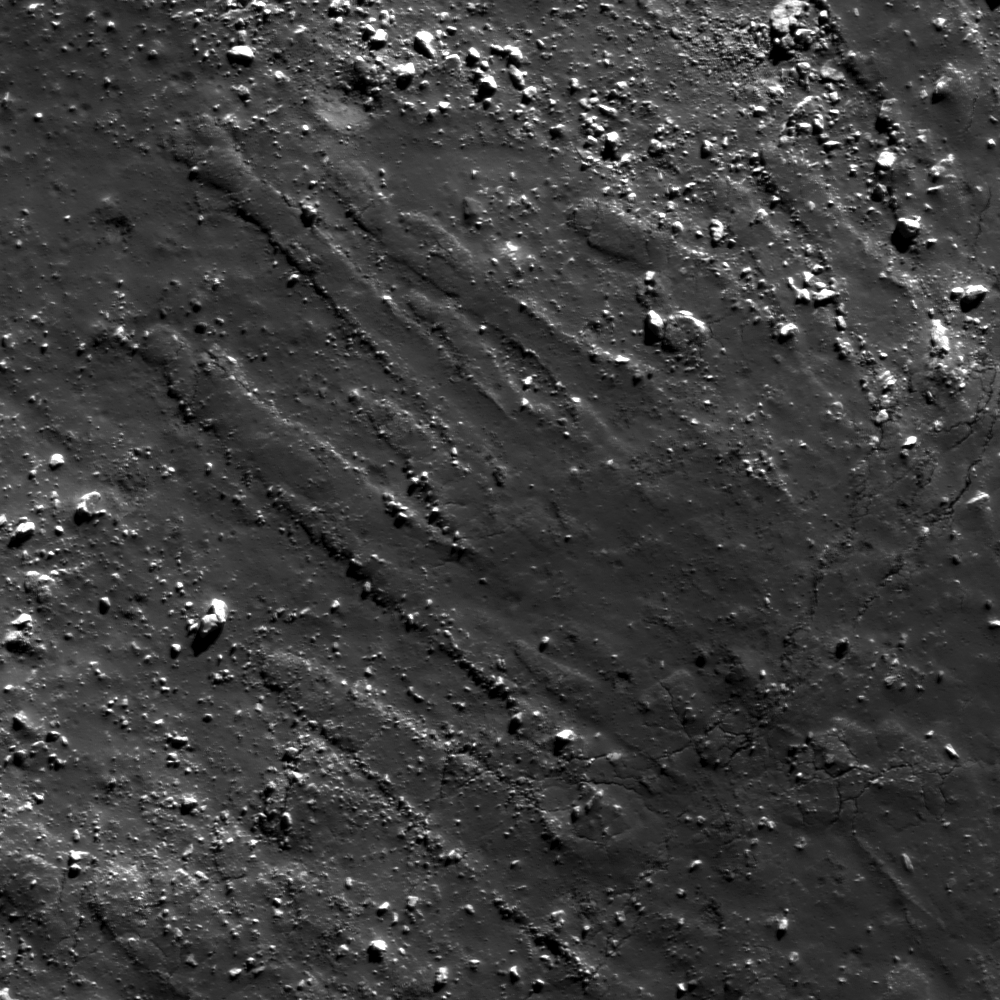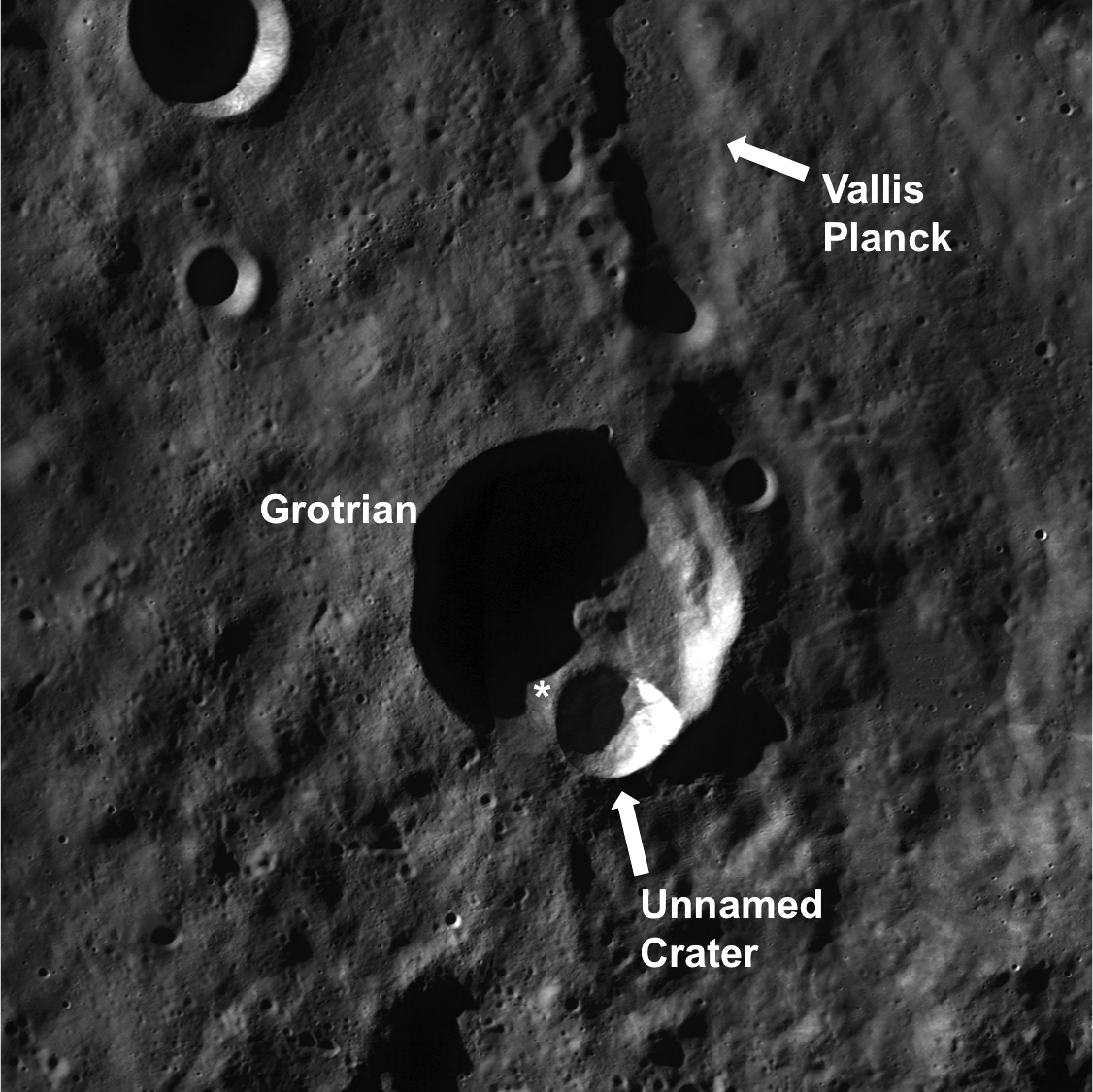
When impact melt is ejected from a crater the melt forms flows or ponds. In today's Featured Image we see an example of multiple flows spreading out from what was initially the same impact melt deposit. The "fingers" of impact melt are flowing radially away from the rim of the parent crater. What caused the impact melt to split into separate flows? Was it the velocity and direction of the initial impact of the melt, the shape of the existing topography, or another change that occurred moments after the parent crater's formation?
This impact melt deposit originates from a young, unnamed lunar crater (located at 66.63°S, 128.61°E, ~13 km in diameter) inside another larger crater called Grotrian (located at 66.17°S, 128.23°E, 36.78 km in diameter). Both craters are north of the Schrödinger basin (79.30°S, 126.50°E). In the LROC WAC context image below you may also notice a long valley oriented north-south starting from north of crater Grotrian. This is Vallis Planck (451 km long), which was probably formed as a result of ejecta from the Schrödinger basin impact.
More interesting impact melt features are located around the western rim of this unnamed crater. Explore the entire NAC frame!
Related posts:
Forked Impact Melt Flows at Farside Crater
Published by Sarah Braden on 8 May 2012
